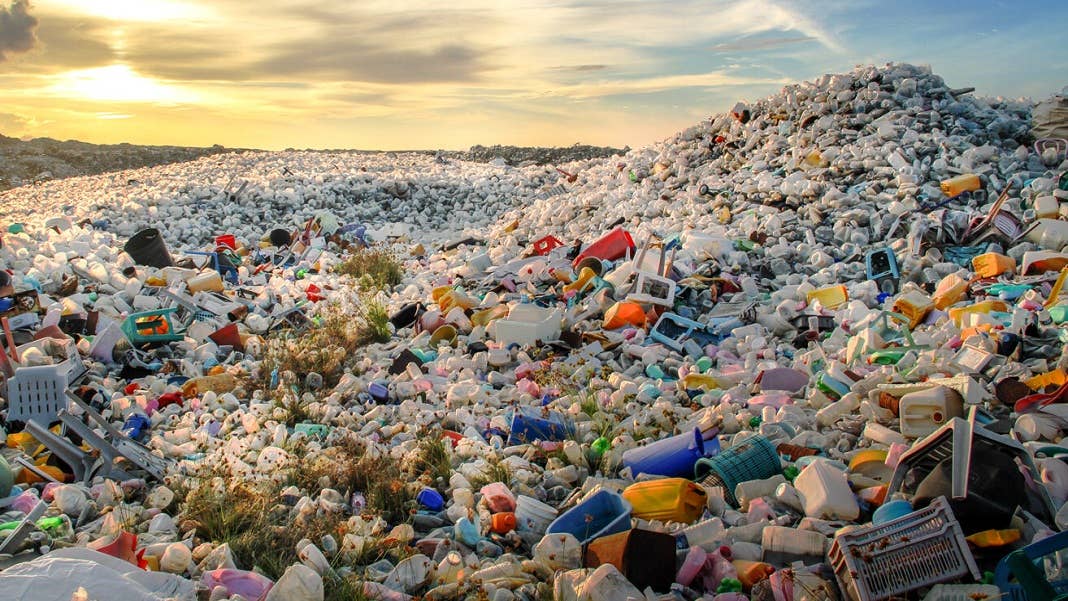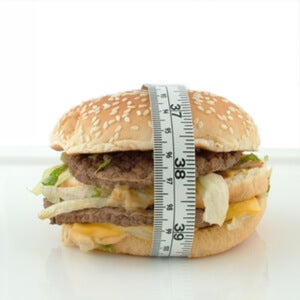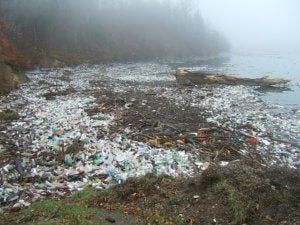Could Having Too Much Become a Bigger Problem Than Having Too Little?

Share
Years ago I traveled to Juarez, Mexico for work, staying across the border in El Paso, Texas and driving back and forth each day. On the Texas side, American life bustled on as usual: wide, well-maintained highways hummed with orderly traffic. Most of the cars were less than a decade old. Strip malls and recently-constructed townhouses were flanked by tidy subdivisions, their grass a vibrant green. Water could be drunk straight from the tap, and there was food to spare.
Across the border was a different story.
Roads in a state of disrepair bore a chaotic jumble of old, rust-eaten pickups and VW Beetles. Barefoot children stood at intersections selling packets of gum to passersby. Glancing east or west from the border crossing station, I saw fertile green fields abruptly give way to land the color of sawdust. Water had to be purchased in bottles, and while food wasn’t lacking, it certainly didn’t come in the same super-size portions as up north.
I'd grown up observing these differences, but something about seeing them in close proximity struck me in a new, raw way. How could there be such widespread abundance and glaring scarcity within the same two-mile radius?
Extrapolating this comparison over the rest of the world, the disparities we see are troubling.
Every year in the US, 63 million tons of food are wasted. Meanwhile, not 700 miles away in Haiti, 53 percent of inhabitants are undernourished.
In the United Kingdom, 2.4 million people—almost four percent of the population—own a second home. Hop a flight south to Nigeria, though, and 14 percent of the population—24.4 million people—are homeless.
Striking as these disparities are, you don’t even have to cross international borders to find them. In most of the world’s major cities, a short cab ride will get you from the most affluent neighborhood to the most neglected slum. The wealthiest one percent of Americans account for almost 17 percent of the country’s total cash income, while the bottom fifth receives less than four percent of that total.
Our world is abundant for some, but scarce for many.
What if we could right the scales such that the world was abundant for everyone? Would that make Earth a dream-like utopia?
This scenario sounds impossible, but if we look closely, there are signs it may not be so far out of reach.
Global abundance is possible
The world today is better off than it has been at any other point in history. It may not seem like it, as we still see war, disease, hunger, and terrorism on multiple continents.
But let’s look at some figures. Though poverty still exists, the percentage of the world’s population living in extreme poverty has steadily declined over the past 45 years. Life expectancy has been on the rise since 1945 in countries on every continent, and the same goes for GDP per capita.
Similar trends are evident in education, literacy, and child mortality.
Signs point to these statistics continuing to improve, aided in part by rapid technological innovation. And with billions of new minds poised to join the global information stream over the next decade, we can only imagine the inventions that await. A universally abundant world may really be possible.
This silver lining has a cloud
That’s fantastic news, right? Undoubtedly. But it doesn’t mean utopia.
The wealthiest nations on Earth face a unique set of problems that, far from being cured by abundance, are actually caused by it.
Health problems: diseases of affluence
Diabetes, cancer, heart disease, hypertension, and depression are all common in the US and other wealthy nations, but far less so in developing countries. As of September 2016, the adult obesity rate in the US was above 20 percent in every state.

Image Credit: Shutterstock
The primary culprit of these conditions is diet, and it's both a quantity and a quality problem. One of the easiest ways to make food abundant is to mass-produce it, but most mass-produced food is highly processed and full of additives, preservatives, and other ingredients our bodies don´t like. It tastes good, though, and it's cheap, and it never runs out—is it any wonder we eat too much of it?
Our post-industrial economy also means most of us are sitting at desks for the greater portion of our waking hours, and driving ourselves to and from those desks in our own personal vehicles. We’re sedentary and isolated, and this takes a toll on our physical and mental health.
Waste: the throw-away culture
When something is scarce, we value it more. When something is abundant, we take it for granted.
Every year, consumers in rich countries waste 220 million tons of food, which is close to the annual net food production of all sub-Saharan Africa—230 million tons. Per capita waste by consumers is between 95-115 kilograms a year in Europe and North America, while consumers in sub-Saharan Africa, south and southeast Asia each throw away only six to eleven kilograms a year.
And it's not just food. I've certainly thrown away at least a few pairs of shoes that had miles of wear left because, well, I bought new shoes. Each time the newest smartphone comes out, millions run to buy it even though their old phones work just fine.
We also have a tendency to overuse resources simply because we can. In fact, as a technology gets cheaper, consumption goes up, negating any net economic or environmental gain. This phenomenon is known as the Jevons Paradox, and air conditioning use illustrates it perfectly. According to the New Yorker, from 1993 to 2005, “the energy efficiency of residential air-conditioning equipment improved 28 percent, but energy consumption for AC rose 37 percent. As a result, by 2010 Americans were using roughly as much electricity to cool buildings as they used total in 1955.”
Our wallets may not pay the price of waste and over-consumption, but our planet sure does. We're unnecessarily depleting Earth’s resources, and we´re filling it with…
Be Part of the Future
Sign up to receive top stories about groundbreaking technologies and visionary thinkers from SingularityHub.


Byproducts: emissions, plastics, and garbage

Image Credit: Pixabay
Americans throw away 2.5 million plastic bottles every hour. Despite our efforts to reuse and recycle, millions of tons of discarded plastic finds its way into the oceans. There, it begins to break down into chemicals like BPA, which end up going into our bodies through food and water, and could have effects ranging from cancer to low sperm counts.
A 2012 study at Yale University found Americans were throwing out twice as much garbage as the EPA thought, with most of it going into landfills. Those landfills are responsible for 20 percent of total US methane emissions.
In 2015, 9.9 billion tons of carbon in the form of CO2 was emitted from fossil fuels. 2016 was the first year on record in which atmospheric CO2 concentration stayed above 400 parts per million for the entire year. The World Meteorological Organization also reported 2011-2015 as the hottest five-year period on record.
The lesser of two evils
Given that millions in the developed world are overweight and ill, consume more than we need, and are filling the planet with trash, what would it look like for abundance to spread to the rest of humanity? Is excess unilaterally preferable to scarcity?
The short answer, obviously, is yes. Ask pretty much any person in any country in the world, and they’ll tell you they’d rather be wealthy than poor. Give anyone living in poverty the option to better their circumstances, and they’ll take it.

Image Credit: Vanessa Bates Ramirez
Comparing the cultures and lifestyles of poor and rich nations, we in the developed world may romanticize poverty for its apparent simplicity; no tedious days working in a cubicle, no commuting in rush-hour traffic, no "keeping up with the Joneses.” Studies have even shown that the poor often feel their lives are more meaningful; it could be argued that meaning is more valuable than happiness.
Abundant countries aren’t perfect, but we who live in them have a choice: whether to eat too much or just enough. Whether to buy single-use plastics or not. Whether to spend our disposable income on a material good or on an experience. Whether to worry about keeping up with the Joneses, or focus on making our lives meaningful in whatever way feels right to us.
Avoiding the pitfalls
Can the rising billions avoid the same health problems, waste, and byproducts of the developed world? Or are they a package deal with abundance?
The beginning of a country’s transition to abundance—the point when the middle class quickly grows and poverty starts to drop—is when attention must be paid to avoiding its pitfalls. As an economy takes off, millions of people who used to live austerely suddenly have the money to buy cell phones, McDonald’s burgers, and bottled Coke. But their governments and infrastructure often can’t keep up.
We’re still working on managing abundance, but the good news for the developing world is that they can skip lessons we’ve already learned. For example, the UK spent a century industrializing on coal. China’s been industrializing on coal for a couple decades, but is already beginning to move to alternate sources of energy—none of which existed in the 19th or even much of the 20th centuries. Mexico banned super-size soft drinks shortly after its obese population reached the world’s top ten, while the US still hasn’t done the same.
Technology contributes to the pitfalls of abundance, but it’s also one of our best tools for fixing them. Combined with the right policies and education—and a rapidly growing percentage of aware, informed, mobilized citizens—we’re only going to keep getting better at resolving them.
The Swedish government recently implemented tax breaks for citizens who repair broken goods rather than throwing them out and buying new ones. California banned plastic bags, and citizens who don’t separate their garbage into compost, recyclables, and trash can be fined. France implemented aggressive measures to reduce food waste, requiring supermarkets to donate unsold food to those in need.
For the first time in history, global abundance is within our reach.
Let’s not screw it up.
Banner Image Credit: Shutterstock
Vanessa has been writing about science and technology for eight years and was senior editor at SingularityHub. She's interested in biotechnology and genetic engineering, the nitty-gritty of the renewable energy transition, the roles technology and science play in geopolitics and international development, and countless other topics.
Related Articles

How Scientists Are Growing Computers From Human Brain Cells—and Why They Want to Keep Doing It

Scientists Say We Need a Circular Space Economy to Avoid Trashing Orbit

Scientists Race to Deliver Custom Gene Therapies for Incurable Diseases in Weeks—Not Years
What we’re reading